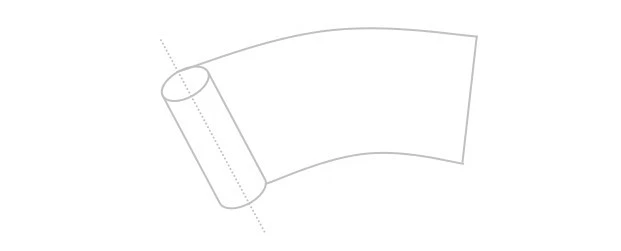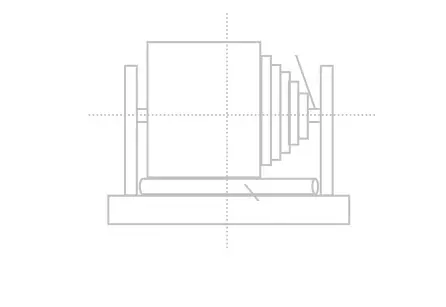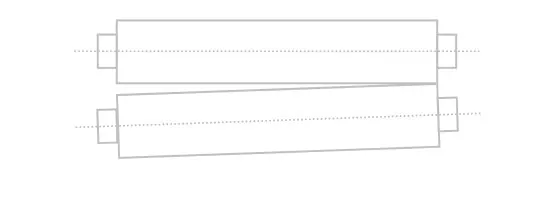Causes and Solutions for Arc-shaped Fabric in Circular Knitting Machines
Dec 08, 2023
-
verview of Arc-shaped Fabric:
Arc-shaped fabric exhibits an appearance where one side is tight while the other is loose. The side with looser yarns forms the outer arc, while the side with tighter yarns forms the inner arc. When the fabric roll is unwound and laid flat on the ground in a relaxed state, it takes on a fan-shaped (arc-shaped) appearance, as shown in Figure.

Arc-shaped fabric disrupts the neat winding of circular knitting machines, causing a shift towards one side. As the roll continues, it deviates more, making it challenging to wind larger fabric rolls. This type of fabric roll is detrimental to subsequent processes such as cutting, coating, and printing, as it hampers the correction of misalignment and results in suboptimal quality in downstream processes.

-
Causes of Arc-shaped Fabric:
(1) Insufficient Tension in Two of the Four Expansion Rods:
One of the reasons for the occurrence of this fabric is the lack of tension in two of the four expansion rods of the circular knitting machine, as depicted in Figure. In this illustration, rods 1 and 2 are tightly expanded against the inner surface of the fabric tube, while rods 3 and 4 do not exert sufficient tension on the other side of the fabric tube. The side with rods 1 and 2 experiences friction resistance, causing the knitted fabric to relatively elongate due to the friction force. When passing through the upper traction roller, the fabric contracts and becomes tight again because flat yarns are elastic – they lengthen under stress but revert to their original length when the force is removed. On the side with rods 3 and 4, there is less friction resistance, leading to less contraction of the yarns and the formation of a loose edge.
(2) Misalignment or Inclination of Two Upper Traction Rollers:
The misalignment of the two upper traction rollers, especially for clamp-type traction rollers, can also result in this phenomenon, as shown in Figure. This misalignment could be due to uneven coating or one end wrapping flat yarns or other foreign objects, causing one end to become thicker than the other. The uneven thickness of the two rollers leads to a gap on one side, where the knitted fabric is not tightly held. This gap causes slipping during elevation, with the speed of elevation on the side with the gap being slower than the linear speed of the upper traction roller. On the side without a gap, the knitted fabric is held tightly, and the elevation speed matches the roller's linear speed. This imbalance causes the side with the gap to have slower elevation, resulting in a tight edge, while the other side forms a loose edge, causing deviation towards the tight edge during the winding process.

-
Solutions:
(1) Ensure Uniform Distribution and Tight Adherence of the Four Expansion Rods:
Distribute the four rods evenly and keep them consistently adhered to the inner side of the fabric tube, ensuring uniform friction resistance around the circumference.(2) Inspect and Adjust the Alignment of Two Upper Traction Rollers:
Check for manufacturing defects or improper installation of the two rollers, ensuring they are aligned. When replacing the coating, clean the adhesive residue from the traction rollers before reapplying. Regularly clean any yarn entanglements or foreign objects promptly.
By implementing these solutions, manufacturers can address the causes of arc-shaped fabric in circular knitting machines, ensuring smoother processes and higher-quality end products.
Next: Distinguishing Between Flat Knitting Machines and Circular Knitting Machines
Previous: Analysis and Prevention of Horizontal Bars in Knitted Fabrics
We have been committed to manufacturing all types of circular knitting machines with great quality and reasonable price for a long time. Our professional team is highly specialized and problem-solving oriented. We put the most effort into meeting your knitting demands, achieving a win-win situation.
